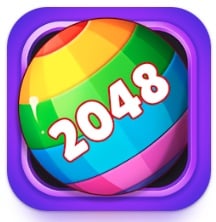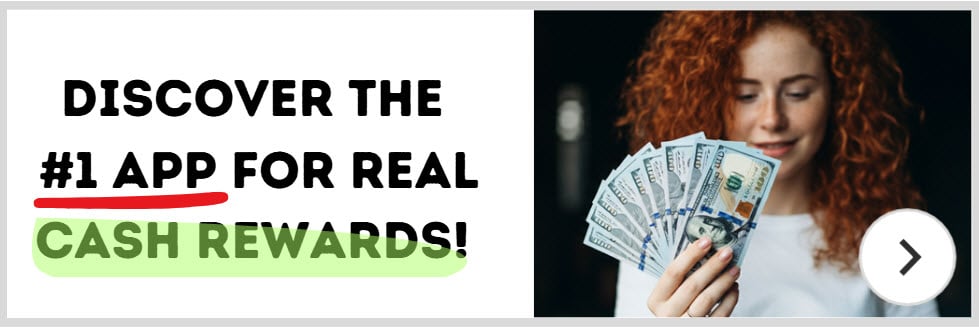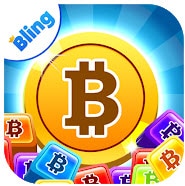Balls Burst Review – Will Your PayPal Explode With Cash?
 Welcome to my Balls Burst review!
Welcome to my Balls Burst review!
You were scrolling social media when an ad popped up showing someone’s PayPal account exploding with cash.
“I made $847 playing this simple ball game!” they squeal, bouncing around like they just won the lottery.
Your brain did some quick math—if they made nearly $900 merging virtual balls, surely you could too, right?
Maybe enough for those overpriced coffee pods or that inflatable hot tub rotting in your Amazon cart.
So you download Balls Burst faster than you can say “financial freedom,” convinced you’re about to become a mobile gaming millionaire.
But what if you have been tricked? Is it legit or fake? Let’s find out before you waste another second!
👉 Before you leave, click here and discover my favorite app that pays for playing games!
What Is Balls Burst?
Balls Burst is developed by SMU Software and currently boasts over 55,000 installations on the Google Play Store.
At its core, it’s a pretty straightforward puzzle game and very dull to be honest!
You simply match balls with the same number to create bigger balls.
The game looks harmless—colorful interface, easy mechanics—but don’t let that fool you.
There’s a lot more happening behind the scenes, and spoiler alert: it’s not in your favor.
How Does Balls Burst Work?
Here’s how the gameplay flows. You start with small numbered balls on the screen.
Swipe, merge, and watch them transform into higher-numbered balls.
It’s a common mechanic you’ve probably seen in similar puzzle apps. The twist?
Every move you make is apparently earning you cash. Or so the game claims.
The very first “reward” sets the tone. After just a few taps, the game proudly flashes a message: “Congratulations! You’ve earned $150!” Tempted? Of course you are.
There’s even a “Get It Free” button inviting you to claim your prize. No effort, no strings attached… or so it seems.
This isn’t generosity—it’s bait. A shiny hook designed to reel you in and keep you playing. And guess what? It works.
Players see that big number and think, “If I made $150 in seconds, imagine what I can earn in an hour!” Spoiler: you won’t.
The Ads Start Rolling In
After that initial dopamine hit, the game turns into an ad factory. You keep matching balls, and the balance climbs—$200, $250, $300.
It feels good, doesn’t it? But this is where the real business model kicks in. The developer isn’t handing out free cash.
They’re racking up ad revenue—your time is their currency.
Once your in-game balance looks impressive, the rules change. From time to time, you are enticed to tap the claim button to collect your cash rewards.
Tap it, and surprise—you have to watch an ad first.
The game keeps you glued to the screen with promises of easy money while serving you ad after ad. Who’s making the real profit? Spoiler: not you.
The $800 Trap
By now, you’re probably wondering, “Okay, but what about cashing out?” That’s the magic question and the cruel punchline.
To withdraw your “earnings,” you need to hit a minimum balance. Sounds fair, right? Until you see the number: $800.
Yes, you read that right. The game dangles an $800 threshold in front of you like a carrot on a stick. Think about that for a second.
Why would a free mobile game pay you hundreds of dollars for merging virtual balls? It wouldn’t. It can’t. The economics make zero sense.
The only thing this threshold does is trap you in an endless loop, pushing you to keep playing, keep watching ads, and keep believing you’re close to a life-changing payout.
Even if, by some miracle, you reach $800 (and good luck with that), don’t expect the money to appear in your account.
The developer could never afford to pay thousands of players hundreds of dollars each. It’s a fantasy designed to keep you chasing an impossible goal.
Why This Model Is So Problematic
Let’s be clear: the game isn’t just wasting your time—it’s manipulating your psychology.
That first $150 reward is pure bait to trigger excitement, and the growing balance is a psychological trick to keep you invested.
As for the $800 minimum withdrawal, it’s a classic sunk-cost trap, making you think, “I’ve already come this far. I can’t stop now.”
Meanwhile, every ad you watch is money in the developer’s pocket. They’re not paying you for your time; they’re profiting from it.
You become the product, and your attention is the commodity.
And let’s not forget privacy. Games like these often have weak or nonexistent data protections, meaning your information could be exposed or sold.
If an app can mislead you about money, why trust it with your personal data?
The Harsh Reality
By now, the pattern should be clear: Balls Burst is another nasty ad farm. The only people making real money here are the developers.
Players end up with nothing but frustration and wasted hours.
Could you argue it’s “just for fun”? Sure, if you genuinely enjoy merging balls while being bombarded with ads every 30 seconds.
But the game isn’t marketed as just a fun puzzle. It’s sold as a quick way to earn big money, which makes it deceptive at best and unethical at worst.
Should You Play Balls Burst?
Let me put it this way: if your goal is to earn real money, don’t bother.
You will not get paid, and even if you did, it wouldn’t be worth the grind. The $800 withdrawal requirement alone should tell you everything you need to know.
That number isn’t a milestone—it’s a mirage.
If you like merge games and don’t mind endless ads, you might find a few minutes of entertainment here.
But know what you’re signing up for: a bait-and-switch model that trades your time for pennies you’ll never see.
Final Verdict
Balls Burst is a trap. It lures players with outrageous promises, hooks them with fake rewards, and locks them into an ad-watching hamster wheel.
The $800 payout threshold is the cherry on top of this manipulative sundae. Avoid it!




